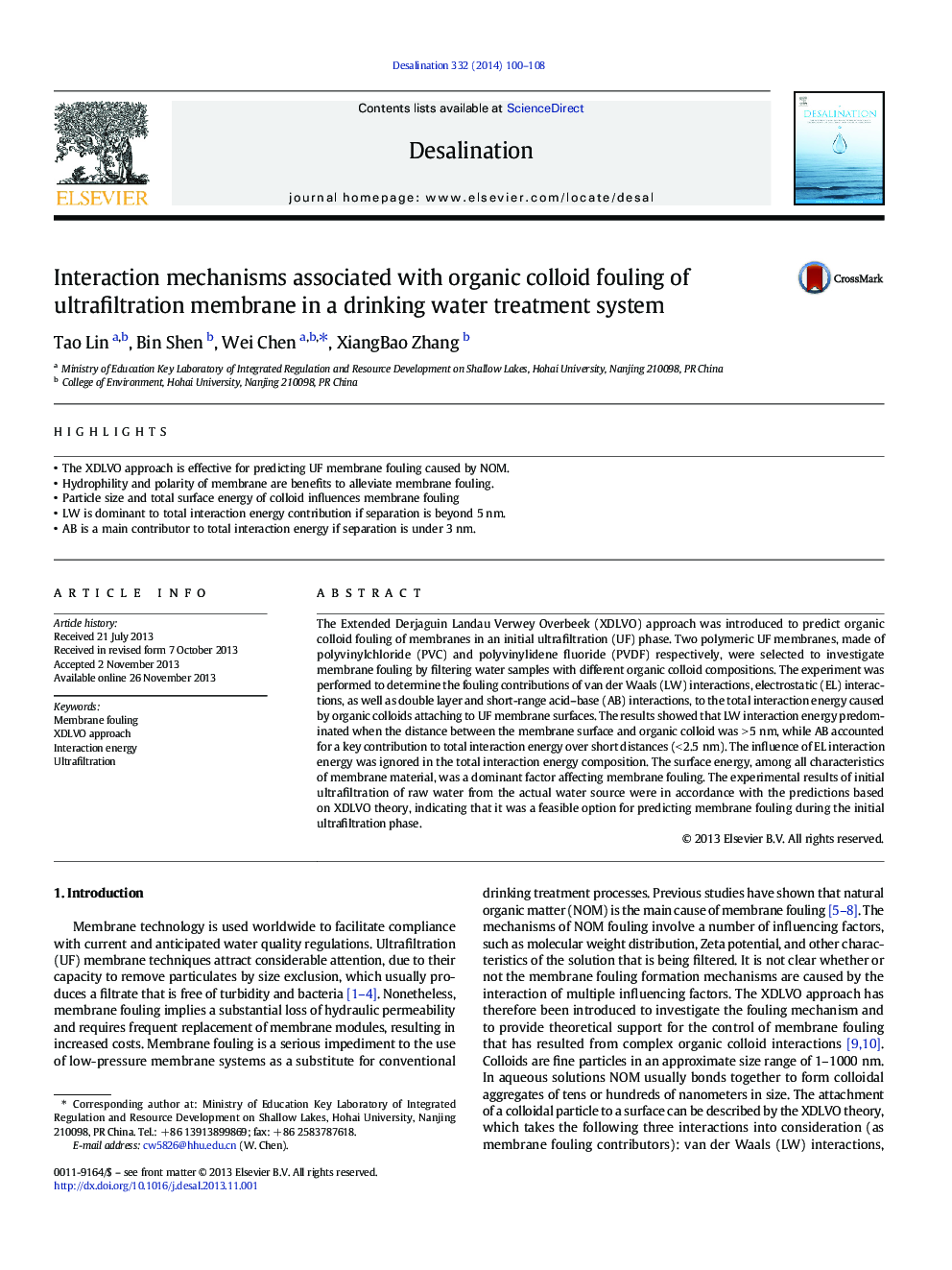| کد مقاله | کد نشریه | سال انتشار | مقاله انگلیسی | نسخه تمام متن |
|---|---|---|---|---|
| 623578 | 882768 | 2014 | 9 صفحه PDF | دانلود رایگان |
• The XDLVO approach is effective for predicting UF membrane fouling caused by NOM.
• Hydrophility and polarity of membrane are benefits to alleviate membrane fouling.
• Particle size and total surface energy of colloid influences membrane fouling
• LW is dominant to total interaction energy contribution if separation is beyond 5 nm.
• AB is a main contributor to total interaction energy if separation is under 3 nm.
The Extended Derjaguin Landau Verwey Overbeek (XDLVO) approach was introduced to predict organic colloid fouling of membranes in an initial ultrafiltration (UF) phase. Two polymeric UF membranes, made of polyvinylchloride (PVC) and polyvinylidene fluoride (PVDF) respectively, were selected to investigate membrane fouling by filtering water samples with different organic colloid compositions. The experiment was performed to determine the fouling contributions of van der Waals (LW) interactions, electrostatic (EL) interactions, as well as double layer and short-range acid–base (AB) interactions, to the total interaction energy caused by organic colloids attaching to UF membrane surfaces. The results showed that LW interaction energy predominated when the distance between the membrane surface and organic colloid was > 5 nm, while AB accounted for a key contribution to total interaction energy over short distances (< 2.5 nm). The influence of EL interaction energy was ignored in the total interaction energy composition. The surface energy, among all characteristics of membrane material, was a dominant factor affecting membrane fouling. The experimental results of initial ultrafiltration of raw water from the actual water source were in accordance with the predictions based on XDLVO theory, indicating that it was a feasible option for predicting membrane fouling during the initial ultrafiltration phase.
Journal: Desalination - Volume 332, Issue 1, 2 January 2014, Pages 100–108
